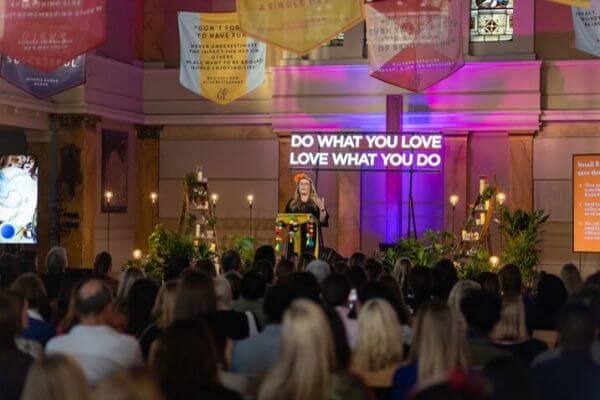Boris Johnson has announced that conferences and other business events will be able to resume from October. Here are eight things to look out for as this important part of the economy starts afresh.
Events can resume from 1st October
Before we get too carried away: a couple of caveats. The plan to open venues for conferences, exhibitions, product launches and the like is subject to the R-rate staying at its current level. It’s also dependent on the successful completion of pilot events, which will give the industry the best possible preparation for staging functions in this COVID-secure way.
But still, this is a massively encouraging development for an industry itching to get underway once more.
Smaller meetings are allowed from 1st August
After months of battling dodgy WiFi and Zoom calls in your kitchen, face-to-face meetings are back. Groups of up to 30 will be able to congregate for meetings – as well as weddings, funerals, religious services and community activities – but only at venues that have been thoroughly COVID-proofed.
Attendances will need to be capped
Every attendee should have the equivalent of 10㎡ space to allow for the 2m distancing (or 1m with mitigation) rules to be followed. Staggering admission times – or separating entry into morning and afternoon sessions, for example – will give event organisers the best chance at maximising attendance while keeping things socially distanced.
Queues might be the hardest thing to manage
Those running a conference or exhibition will need to look after attendees both inside the venue premises and out. While one-way systems and floor markings should keep people apart inside, guests will need to be kept a safe distance away from each other when waiting to enter. Introducing a queue system (which, as Brits, we should love), using barriers or having staff on hand to direct people could help here.
You can’t just rock up on the day
Those planning to host a conference or trade show this autumn must encourage people to book tickets and register online beforehand. Doing so will allow organisers to conveniently store attendees’ contact details; which will need to be kept for 21 days after the event.
People can look round venues from 1st August
Venues will be able to show small groups of people (maximum of 30) around their premesis two months before the October resumption date. This will give prospective conference planners a chance to explore the facilities, ask questions and generally picture how their function could pan out. It’s also an opportunity for venues to get ahead and start drumming up business ahead of what should be a particularly busy autumn / winter season.

St Mary’s, the Grade-I listed venue in central London, will be able to stage conference events in the autumn.
Handouts and gifts won’t be permitted
The type of branded freebies you can usually scoop up at conferences won’t be around this year, unfortunately. Business events must take every step possible to reduce contact between attendees, which also means that nametags / lanyards will be disregarded.
The industry is worth more than £30billion
According to Gov.UK, the business events / conference sector contributes around £32.6 billion to the UK economy each year. What’s more, the industry was responsible for a quarter of the 38million international visits to this country in 2018. While a business conference might look and feel very different in 2020, it’s clearly very important that they are able to get up-and-running once again.





